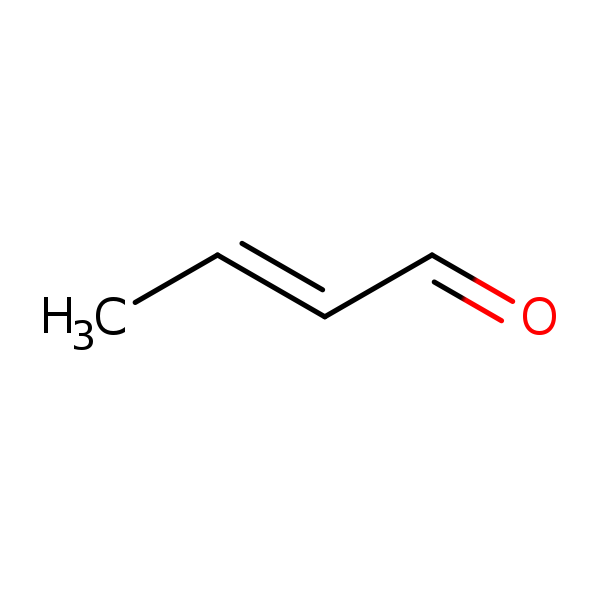Crotonaldehyde
CASRN 123-73-9 | DTXSID6020351
- IRIS Summary (PDF) (8 pp, 101 K)
Noncancer Assessment
Reference Dose for Oral Exposure (RfD) (PDF)
(8 pp, 101 K)
Last Updated:
Not assessed under the IRIS Program.
Reference Concentration for Inhalation Exposure (RfC) (PDF)
(8 pp, 101 K)
Not assessed under the IRIS Program.
Cancer Assessment
Weight of Evidence for Cancer (PDF)
(8 pp, 101 K)
Last Updated: 06/01/1991
| WOE Characterization | Framework for WOE Characterization |
|---|---|
| C (Possible human carcinogen) | Guidelines for Carcinogen Risk Assessment (U.S. EPA, 1986) |
- Based on no human data and an increased incidence of hepatocellular carcinomas and hepatic neoplastic nodules (combined) in male F344 rats. The possible carcinogenicity of crotonaldehyde is supported by genotoxic activity and the expected reactivity of croton oil and aldehyde. Crotonaldehyde is also a suspected metabolite of N-nitrosopyrrolidine, a probable human carcinogen.
- This may be a synopsis of the full weight-of-evidence narrative.
Quantitative Estimate of Carcinogenic Risk from Oral Exposure (PDF) (8 pp, 101 K)
Not assessed under the IRIS Program.
Quantitative Estimate of Carcinogenic Risk from Inhalation Exposure (PDF) (8 pp, 101 K)
Not assessed under the IRIS Program.
- Human Health Benchmarks for Pesticides (HHBP). This database provides human health benchmarks for pesticides that may be present in drinking water.
- Office of Pesticide Programs Pesticide Chemical Search. This database provides links to health effects information and registration status for pesticides.
- Chemistry Dashboard. This database provides information on chemical structures, experimental and predicted physicochemical, and toxicity data.
You will need Adobe Reader to view some of the files on this page. See EPA's PDF page to learn more.
Contact Us to ask a question, provide feedback or report a problem.

